
Automatic Transport Vehicle
Instructors: Dr. Mian Li, Dr. Irene Wei
Team Members: Chunyu Wang, Kezhi Li, Ang Li, Jiajun Wang
Student Projects
VG100
Project Video
Team Members
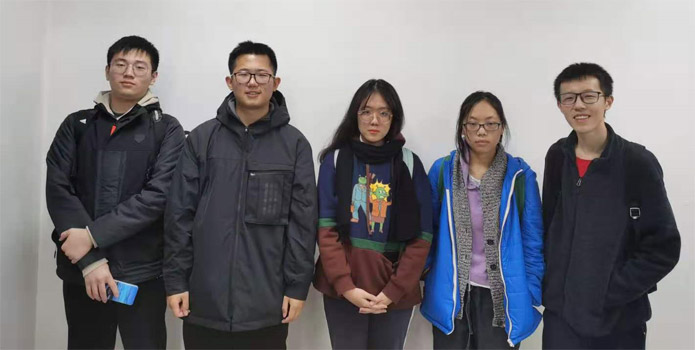
Team Members:
Chunyu Wang, Kezhi Li, Ang Li, Jiajun Wang
Instructors:
Dr. Mian Li, Dr. Irene Wei
Project Description
Problem
There are still many 5-6 story dorm in campus without elevators. It’s hard for students to go downstairs and get things and go upstairs if they live on a high floor. However, the dormitory is generally off-limits to outsiders. If someone gives something to a student, he has to go to the first floor to get it, such as take-out.
Concept Generation
Our project aims at building a vehicle with a crawler that could climb stairs and use a gray scale sensor to reach the designated room.
Design Description
A system based on the connection between the hardware and the software is our final solution. The hardware part contains a gray scale sensor that can identify gray bars on the ground. This means the car can follow our preset route. The gray bar in front of each room is a cross, which means the car can identify the gray bars easily. The software part is a digital recorder. The delivery person can enter the number of the room and the vehicle will move to the designated room automatically.
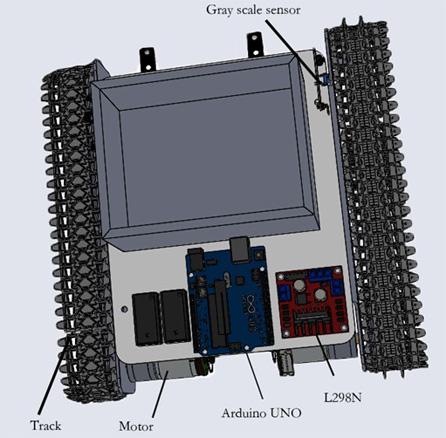
Fig. 2 The left view of vehicle
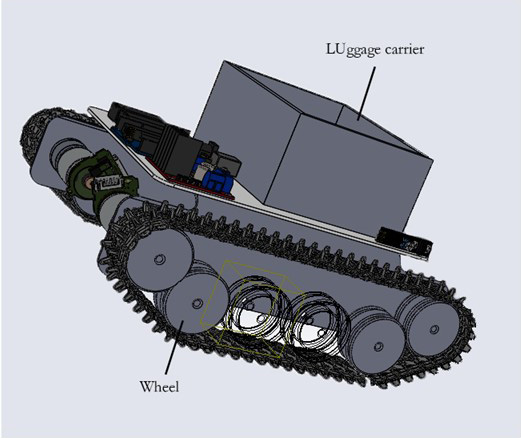
Fig. 2 The left view of vehicle
Modeling and Analysis
The modeling of the vehicle is divided into two parts. One is the design of the crawler. We use the traditional way of designing crawler ensuring that the vehicle can climb the stairs stably. The other is the design of gray scale sensors. We attach four sensors to the front of the car, two forward, two sideways. The two forward sensors can ensure that the car move strictly according to the gray strip on the ground. The two sideways sensors can identify the gray bars whose shape is cross. Then the data will be uploaded to the Arduino main board and the stored data will “+1”. If the stored data reach to number which is pre-typed, the vehicle will stop and remind the people in the room to open the door.
Validation
In order to measure the walking speed of the stair with different slope and the walking precision of following the gray bars. We tested is with stairs with different slopes and with light intensities. The result is as follows:
Table 1: Different stairs.
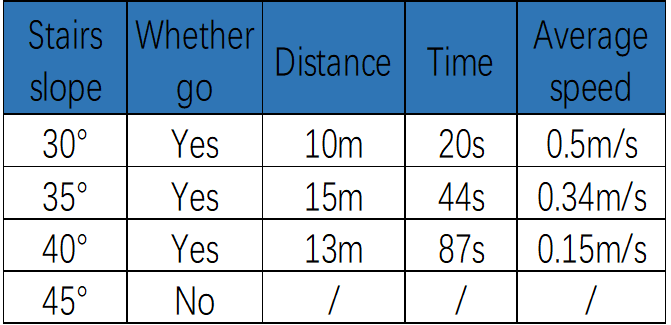
Table 2: Different light
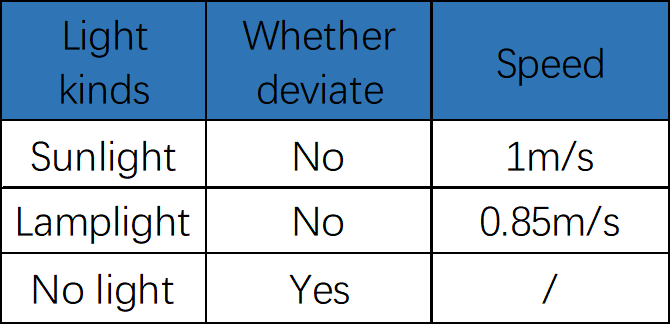
Conclusion
The project solves the problem by providing an automatic transport vehicle to help students carry their take-out in the first floor. One possible improvement is to largen the base plate so that the vehicle can climb a staircase with a larger gradient. Through this project, we find a way to save students’ time and reduce the workload of couriers. Students don’t need to go downstairs and couriers don’t need to send takeout to the door. Moreover, as COVID19 is predicted to coexist with human, this solution can greatly protect people’s health in the future.
Acknowledgement
Dr. Mian Li and Dr. Irene Wei from the UMSJTU Joint Institute; Teaching Assistants [Hanyang Feng and Fubo Qi] for VG100 at UM-SJTU Joint Institute. More project information, please contact: [little_black@sjtu.edu.cn]
UM-SJTU JOINT INSTITUTE